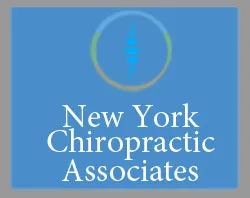 Every job comes with its own set of health hazards, no matter what profession. And we’re not only referring to manual labor or other forms of highly physical work. A profession that many people don’t think about in regards to their health? Office work! Just because it’s low impact doesn’t mean there aren’t risks—and trust us, there are risks. Let’s take a look at the kind of health problems that can come with working in an office environment as well as some solutions!
Every job comes with its own set of health hazards, no matter what profession. And we’re not only referring to manual labor or other forms of highly physical work. A profession that many people don’t think about in regards to their health? Office work! Just because it’s low impact doesn’t mean there aren’t risks—and trust us, there are risks. Let’s take a look at the kind of health problems that can come with working in an office environment as well as some solutions!
Workplace Wellness at Risk
80 percent of the American workforce sits all day, which to some, doesn’t seem like a big deal—however, recent studies have found that sitting for long periods of time can be just as hazardous to your health as smoking; think weak muscles, tight joints, lower back strain, increased risk of disease (especially heart disease) and shortened life expectancy. To combat this, simply working out here and there—or even daily—isn’t enough. You have to get moving throughout the day:
- Take a one to three minute break every half hour to stand or walk
- Get a standing desk
- Always use the stairs
- Print items at the furthest printer from your desk
The Postural Problem
Poor posture can have a ton of negative effects on your body—some you’re likely not even thinking of! For one, when you’re slouching, your muscles are forced to work harder. This uses up precious energy and it can create sore and stiff muscles. Bad posture can also lead to poor circulation and digestion, and most importantly, stress and strain on the spine, which often leads to lower back pain, headaches and neck strain. Here’s what you can do to keep your posture in check during the workday:
Create an optimal work station—if you work at a computer, the bottom edge of the screen should be level with your eyes, approximately 30 inches from the face and directly in front of you
Sit in style—choose a desk chair that provides lumbar support and keeps your elbows, hips and knees at 90 degree angles; we recommend an adjustable one that you can tailor to fit your needs. This means no more crossing your legs! Also, consider a footstool to take pressure off of the lower back
Stay in balance—if you carry a bag, keep the weight to a minimum. Remember to switch shoulders often, and opt for bags that cross the chest for better balance and hands-free movement. Even better? Get a rolling bag

A Long-Term Solution
Working positive physical and postural changes into office place habits will go a long way toward improved health, but for many, it won’t be enough. It’s time to see a chiropractor! Chiropractors are the leading experts in the musculoskeletal system—this includes your bones, muscles, cartilage, tendons, ligaments, joints, and other connective tissues.
The musculoskeletal system can be compromised by poor posture and repetitive motions, which may result in pain and discomfort like headaches, neck aches, shoulder strain and low back pain. Through chiropractic adjustments and therapies (tailored to your specific needs) chiropractic treatment can address these musculoskeletal issues directly, eliminating symptoms and relieving pain.
